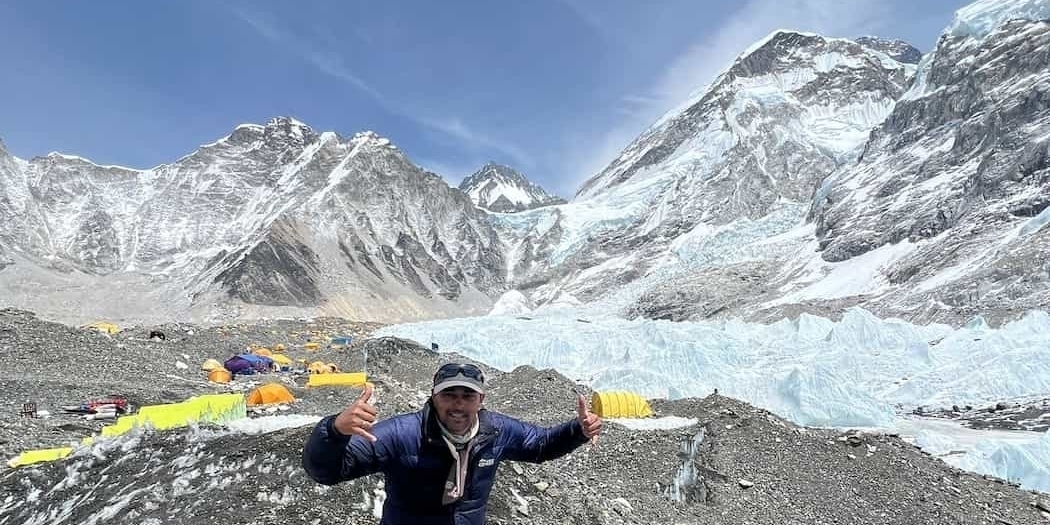


The Khumbu Valley is a remarkable and traditionally amusing region established in the heart of the Nepal Himalayas. It is one of the most popular and beautiful trekking areas in the world. Primarily, This area is located in the northeastern part of picturesque Nepal. This Attractive valley is well-known for its spectacular landscapes.
Usually, Sherpa villages, and their role as a gateway to the world’s highest peak, Mount Everest. Searching across the Solu-Khumbu district, the Khumbu Valley is surrounded by towering mountain ranges. This includes Mount Everest, Mount Lhotse, and Mount Nuptse Massifs.
The Khumbu valley is home to several iconic Sherpa Villages like Namche Bazaar, Thame, Tengboche, Dingboche, Pheriche, Labuche, and Gorakshep.
Lukla and speaking is the beginning part of Sherpa culture and similarly beginning part of the Everest Base camp trek, Everest Gokyo Ri trek, or any other peak climbing like Island peak climbing, Labuche peak climbing, etc.
Each village presents a glimpse into the distinctive lifestyle, culture, and traditions of the Sherpa People. Sherpa people show their traditional culture to the visitors.
One of the most renowned aspects of the Khumbu Valley is the prospect it offers for trekkers and climbers to experience the Himalayan wilds and embark on trips to Everest Base Camp.
The Everest Trekking routes in the area traverse through diverse topographies. The lush forests and Rhododendron and Juniper fill hillsides to sharp glacial rubbles. As trekkers make their way through the Khumbu Valley.
They pass ancient Monasteries, the prayer flag trembling in the wind and the Sherpa community’s warm hospitality by Sherpa people. There is another popular place Tengboche and the most famous monastery in the Everest Region.
It is the spiritual and cultural focal point of the valley providing a peaceful setting for trekkers and peak climbers to soak surroundings.
The Khumbu Valley plays a vital role in secondary climbing expeditions to Mount Everest. Those who are joining to go to the summit of Everest, have to practice in Khumbu glacier for a long time.
Similarly, there are other peaks and high mountains like Mount Lhotse expedition, island peak climb, Labuche Peak Climb, Thamsherku, and many peaks to climb.
Everest Base Camp is Located at around 5, 364 meters. Serves as a beginning point for climbers before they begin their ascent to the summit.
The Khumbu Ice Fall is a deceitful and dynamic section of the glacier, offering a tough challenge to mountaineers as they make their way to higher camps. In the high climbing season of spring, people are practicing in there for climbing.
However, Similar to other regions in the Nepal Himalayas, the Khumbu Valley is not immune to the effects of climate change. Mostly ice is melting from the worldwide climate change effect.
The retreat of Glaciers' unpredictable weather patterns and other environmental changes are impacting the landscape and ecosystems of the region.
Even through these challenges, the Khumbu Valley remains a symbol of natural beauty, cultural heritage, and human determination. Until this point, you can see several yaks carrying the goods and climbers climbing stuff. It is very hard but they look comfortable with heavy loads.
It continues to charm adventures, investigates, and nature enthusiasts from around the world.
This valley fosters a deep appreciation for the majestic Himalayas and the Sherpa way of life.
Usually, Trekking and touring around Everest is the most popular trekking and peak climbing destination in the world.
The Khumbu Glacier is a major glacier situated in the Khumbu region of northeastern Nepal in the Sagarmatha National Park. It is so long and wide too because it starts from Everest, Nuptse, and Lhotse Mountains.
It is located mahalangur Himalaya range.It is perhaps most renowned for being one of the major routes to the summit of Mount Everest, the world’s highest peak.
Khumbu Glacier starts from Everest south and cools down to Thugla. The glacier stretches over approximately 17 miles (27 kilometers).
The Khumbu Glacier is measured as one of the most extensive and notable glaciers in the High Himalayas.
It flows down from the western side, a vast gently sloping bowl-like valley nestled between the Everest, Lhotse, and Nuptse ranges.
The glacier-striking Entrance, with its icy splits and sears, has posed challenges to Mountaineering and climbers on their journey to reach the peak of Mount Everest. It is an interesting part and acclimatization for the summiteers.
Everest trek route is a well-known climb route, such as the South Col and Southeast Ridge routes, traversing across the Khumbu Glacier and its surrounding territory.
The Khumbu Glacier is not only important for climbers but it also plays a crucial role in the livelihoods. One of the local Sherpa Societies and the overall environmental balance of the Everest area as well as the mountains.
It serves as a reminder of the delicate balance between human activities, and nature. The food and accommodation of the Everest region are more Western and traditional types of Sherpa culture like butter tea, Sherpa stew, and many more.
As well as the urgent need for sustainable practices to mitigate the impacts of climate change on this iconic landscape of the World’s top.
Due to the Effects of global warming and climate change, the Khumbu Glacier is like other glaciers around the world.
It has been experiencing melting and retreat.
This phenomenon has raised concerns about the long-term impact on the local location. It includes changes in water availability and prospective threats for climbers due to unstable ice conditions. So human beings need to be careful of climate change in the world. Try to preserve the jungle and wild areas.
